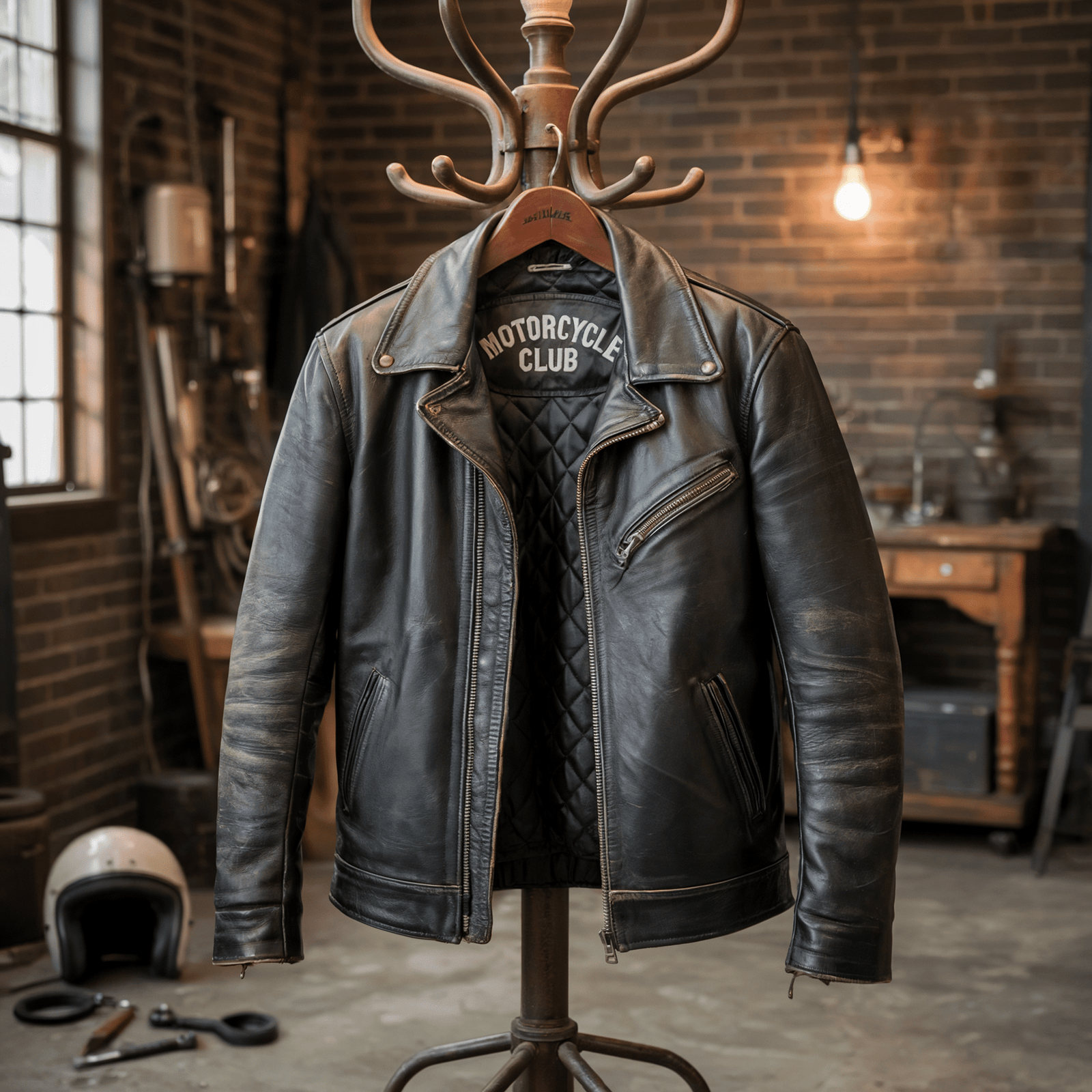Your Cart is Empty
BLACK FRIDAY SALE $25 OFF - USE COUPON BFRIDAY25 AT CHECKOUT NOW!
Menu

BLACK FRIDAY SALE $25 OFF - USE COUPON BFRIDAY25 AT CHECKOUT NOW!

What is Protein Leather?
by Jennifer Smith February 22, 2025 4 min read
Protein leather, or Pleather, is a vegan-friendly alternative to real leather. It is also sometimes referred to as plastic leather. Though real leather made from the hides of animals like cows, sheep, and goats surpasses any artificial option given its durability, breathability, and warmth, there are several reasons why alternatives like protein leather are being used. Protein leather is an excellent but inexpensive alternative created through biotechnology that aims to replicate the properties of animal leather without using animal hides.
Let’s get into the details of what protein leather is made of, its uses, and how it compares to real leather.
Is Protein Leather Artificial Leather?
Yes, protein leather is synthetic leather made from eggshell protein combined with resin. However, unlike other types of mass-produced artificial leather that get damaged after a few wears, protein leather has a higher level of durability.
How is Protein Leather Produced?
Idemitsu Kosan, a top petrochemical company in Japan, created a unique type of protein leather. They made it by mixing protein powder from eggs with a special resin, producing a flexible and strong material that feels like real leather. The actual material was originally designed for car interiors but has also become popular in making headphones.
Protein Leather Features
Let's unfold what makes protein leather a truly viable and appealing option.
Quality
Protein leather is incredibly long-lasting and resists wear and tear better than standard synthetic leather types. It replicates the look and feel of real leather while offering good quality. The fabric backing of pleather makes it flexible and strong enough to create day-to-day products. Car seat covers and headphone ear cushions made of pleather can last for decades if well cared for.
Uses
This vegan-friendly artificial leather is commonly found in various applications like upholstery, clothing, and accessories like over ear headphones. Recently, it has become a must-add in the textile industry. However, being non-porous, pleather isn’t breathable. Crafting premium outerwear like custom leather jackets isn’t a viable option, as it won’t offer breathability and temperature regulation.
Despite this limitation, pleather is being used for several products where durability is required. Its consistent texture and resistance to wear make it a favorable choice.
Types of Protein Leather
Protein leather is available in different qualities. High-quality protein leather (the type used for car seat upholstery and headphones) is robust and functional. The cheaper version of pleather lacks the quality fabric backing and is made with the PVC or polyurethane combination. Due to being inflexible and weak, it breaks down within months (even sooner with regular use).
Protein Leather vs Real Leather
The protein leather surface closely resembles real leather and lasts well with proper care.
Real leather is made from animal hides, and the raw material undergoes multiple production processes including tanning and finishing. Some conventional tanning procedures are known to harm the environment. In comparison, protein faux leather or pleather is crafted using lab-made proteins.
Real leather has natural imperfections, a unique smell, and a soft texture that changes over time. Protein leather offers a consistent look but lacks the scent and evolving texture of the real thing, a common caveat with synthetic material.
The biggest difference is that real leather is breathable and water-resistant but not waterproof. Protein leather is fully water-resistant but can feel stiff if overexposed to water and feels uncomfortable in extreme temperatures.
Protein Leather vs Genuine Leather
Genuine leather is real leather but is considered lower in quality than full-grain or top-grain leather. Protein leather excels when it comes to durability but is more affordable than genuine leather as it can be manufactured at scale.
For consumers seeking vegan-friendly options, protein leather offers an attractive alternative to genuine leather without compromising quality.
Pros and Cons of Protein Leather
Let’s weigh in on what sets protein leather apart, as well as the cons associated with it.
Pros:
- Closely resembles real leather, making it hard to find the difference if you're not an expert.
- It is machine-made and has a uniform appearance.
- High-quality protein leather is resistant to wear and tear and heat.
- Protein leather is more affordable than real leather.
- Reduced environmental impact compared to traditional cattle farming
- Customizable properties (strength, flexibility, texture) through bioengineering
Cons:
- Subpar-quality pleather is not as durable as real leather and becomes highly uncomfortable over time.
- Isn’t as breathable as genuine leather.
- Despite significant advancements, protein leather still faces challenges in achieving the same level of durability as traditional leather in certain applications.
Maintaining Protein Leather
To clean a protein leather product such as ear pads, wipe it with a soft cloth dampened in warm water to gently remove dirt. If there is a stain, dip the cloth in a soapy solution and rub off the stain gently to make sure you don’t wear down the material.
Exposing protein leather to heat or moisture will affect its look and durability. Also, do not attempt to clean it with harsh chemicals.
Summing Up
It’s an undeniable fact that alternatives to real leather in good quality, such as protein leather, are an essential invention. Sustainable materials that stand the test of time are much needed to cater to the rising demands of consumers who seek environmentally friendly, affordable, and long-lasting materials.
Leave a comment
Comments will be approved before showing up.
Also in Blog | Leather Skin Shop

Types of Sleeves in a Leather Jacket
by Jennifer Smith August 24, 2025 6 min read
The different types of sleeves shape the shoulder, control the movement, and change how the leather jacket looks in motion. There are various types of sleeves, such as cap sleeves, bell sleeves, raglan sleeves, and more.

How to Get Smell Out of Leather Jacket?
by Jennifer Smith August 08, 2025 4 min read
Over time, a leather jacket can smell like sweat, mildew, or smoke. But do not worry, there are safe, proven ways to get rid of those unpleasant smells at home.

What Is A Trench Coat
by Jennifer Smith August 02, 2025 6 min read
A trench coat is a long, lightweight outerwear piece designed to protect against wind and rain. Its defining features include a double-breasted front, a belted waist, wide lapels, and often epaulets and a storm flap.
Leather Jackets for Men
Leather Jackets for Women
Accessories for Men & Women
Recent Articles
- Types of Sleeves in a Leather Jacket
- How to Get Smell Out of Leather Jacket?
- What Is A Trench Coat
- What Is A Peacoat Jacket?
- What is Polyester Fabric?
- What is Satin Fabric?
- What is Shearling Leather?
- Varsity Jacket Or Letterman Jacket? Everything You Need To Know Before Buying
- What is Semi Aniline Leather?
- What Is Cotton Fabric?
Size Chart
